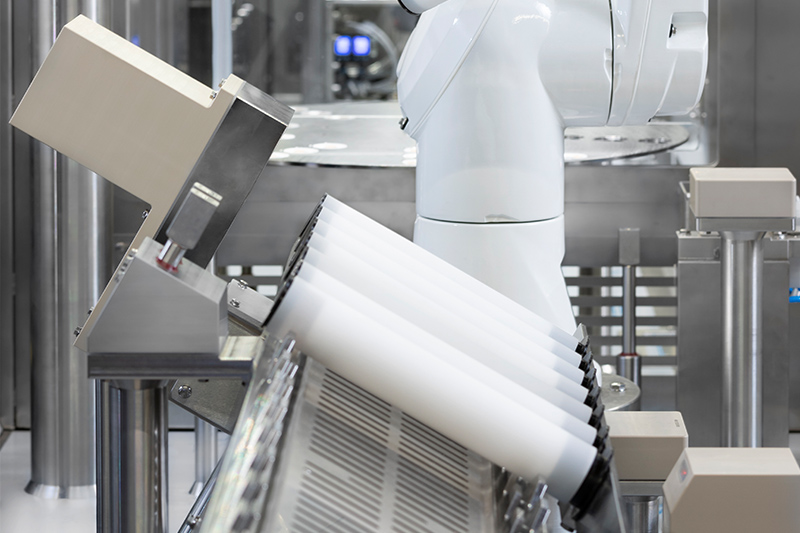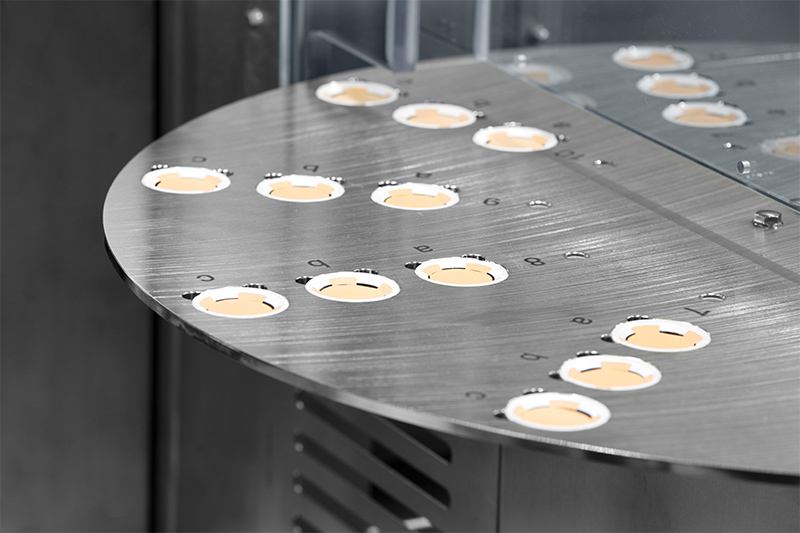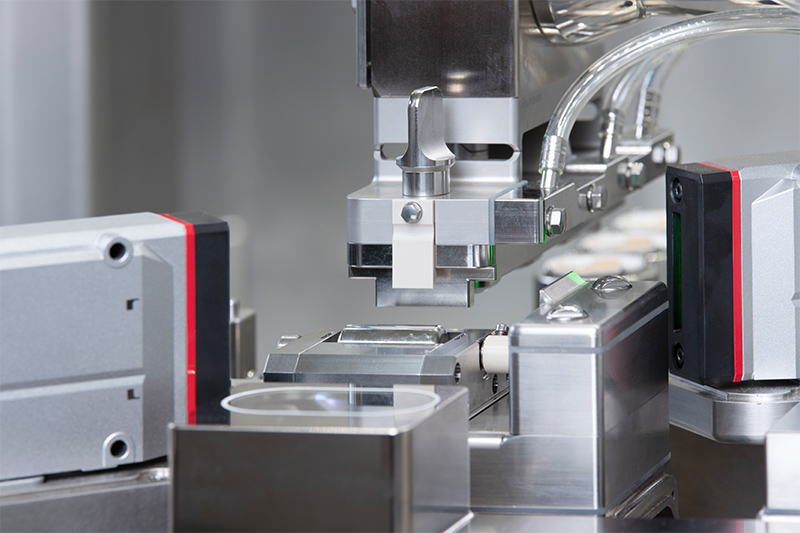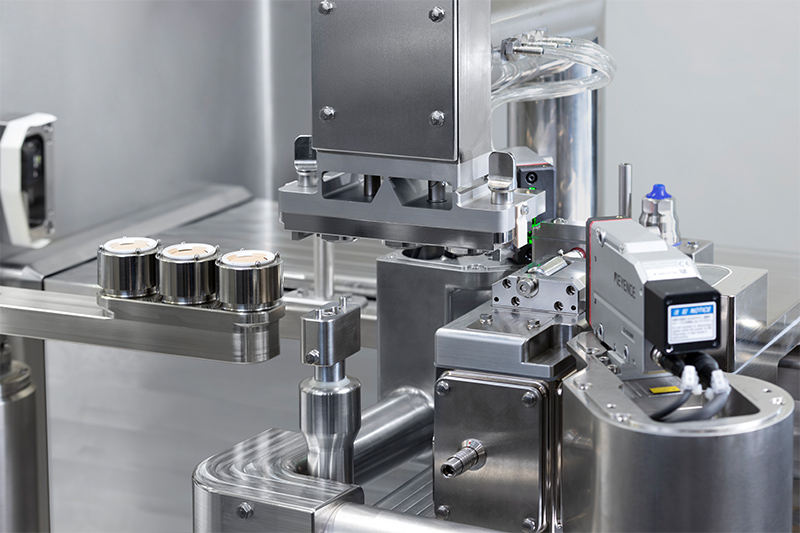The Californian biopharmaceutical company Zosano Pharma is one of the pioneers in the field of intracutaneous drug administration using MAPs (microarray patches) as an alternative to oral delivery. These microneedle systems penetrate the uppermost skin layer, allowing a more rapid absorption of active ingredients into the bloodstream than with oral administration. Zosano has developed its own device, a proprietary intracutaneous microneedle system.

Prior to application, the patch ring assembly is snapped onto the handheld, reusable applicator.
“The core of our technology consists of almost two thousand drug-coated titanium microneedles,” explains Hayley Lewis, Senior Vice President of Operations at Zosano Pharma. “The patch is about the size of a two-euro coin and is applied to the skin using a reusable handheld applicator. To make the application as convenient and safe as possible, the microneedle patch is mounted in two polymer rings. The patient snaps the outer ring onto the applicator. Once pressed downward, the applicator applies the patch with a precisely defined energy onto the skin, while the ring assembly remains attached to the applicator.”
Novel processes and precise mechanics
In the uppermost layer of the cutis, the epidermis, the drug coating is reconstituted and quickly available for absorption. “Our triptan-coated patch for the acute treatment of migraine, for which we filed an NDA to the FDA at the end of 2019, can be removed and disposed of after just 30 minutes. Wear times of our system are considerably shorter than those of traditional transdermal systems, which also have the drawback that delivery of the active ingredient is typically slow, as well as inefficient,” says Hayley Lewis.
Manufacturing an innovative device such as the intracutaneous microneedle system required a series of novel processes. One of the challenges was to find a dip coating technology for applying tiny amounts of formulation on each microneedle. This is where Harro Höfliger, with their experience in the field of microneedle systems and dosing processes in micro quantities, came in as a partner for development and scale-up. Hayley Lewis: “A microneedle is only about 340 µm in height – precise mechanics and high-end control systems are essential for coating accuracy and uniformity. Our first joint milestone was a laboratory-scale coater for proof-of-principle (PoP). Harro Höfliger has scaled up the principle of a rotating drum that creates a thin liquid formulation film for higher output.”
“Harro Höfliger and Zosano are both pioneering this new technology.”Hayley Lewis, Senior Vice President of Operations at Zosano Pharma
The fully automatic line from Harro Höfliger not only coats up to 12 products per minute in a low bioburden environment. It also carries out the final assembly of the devices and packages them individually in heat-sealed, nitrogen-purged foil cups. The subassembly of adhesive backing, inner ring and array are loaded in tubular containers. These containers are fed by a walking beam construction to a robotic system where the parts are de-loaded and prepared for further processing.
A separate robotic system distributes the components to four coating stations where the arrays are dipped several times into the formulation film at a controlled depth, and speed. A high-resolution camera then checks for integrity of the microneedles and uniformity of the coating. After coating, each subassembly is pressed into the outer ring. The final assembly is then transferred to a customized SSP2 machine for forming, filling and sealing of aluminum packaging.
Discover further details of the fully automatic machine:
After forming, a retainer is sealed into the cups into which the device is inserted with the correct orientation, followed by printing the cover foil, purging with nitrogen, sealing and punching. Quality and traceability play a major role: The products are discharged on four lanes – one for each coating station.
“Harro Höfliger has an extremely technical and diligent approach to processes and challenges. We’ve come a long way together, and it has been a deep, collaborative experience,” says Hayley Lewis. “We’re both pioneering this new technology and have evolved in our understanding of it. It’s always been a dialogue, never a one-way conversation.”
Zosano
About Zosano
![]() Zosano Pharma Corporation, headquartered in Fremont, CA is a biopharmaceutical company focused on providing systemic administration of therapeutics to patients using their proprietary intracutaneous microneedle patch technology. Zosano is focused on developing products where rapid administration of established molecules with known safety and efficacy profiles provides an increased benefit to patients.
Zosano Pharma Corporation, headquartered in Fremont, CA is a biopharmaceutical company focused on providing systemic administration of therapeutics to patients using their proprietary intracutaneous microneedle patch technology. Zosano is focused on developing products where rapid administration of established molecules with known safety and efficacy profiles provides an increased benefit to patients.
Download this article as PDF file
Photos: Zosano Pharma, Graphic: shutterstock.com/Tatiana Barinova




